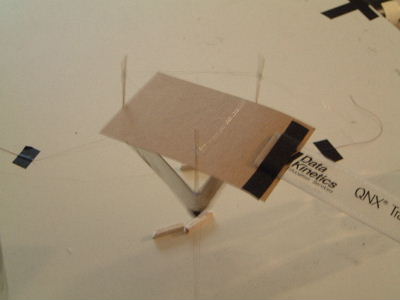Lifter/ionocraft ion wind tests
This page details my attempts to determine what effect any wind that the lifter creates has on its lift.
March 10, 2012 - Smoke tests using an incense stick
I shopped around for an incense stick that produced a great deal of smoke and did some smoke tests. The results showed that there was abundant downward airflow in the middle of the lifter. This was shown by the smoke flying down from the top but also from the smoke hitting the tabletop below and flying outward. The photo below showing this happened to capture a burning piece of the incense stick flying away at high speed, truely a strong wind. There was also airflow at the sides pulling the air toward the lifter and down, possibly cause directly or indirectly by suction created by downward airflow nearer the skirt.
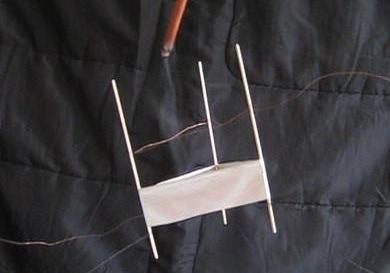
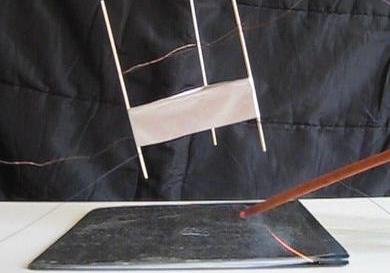
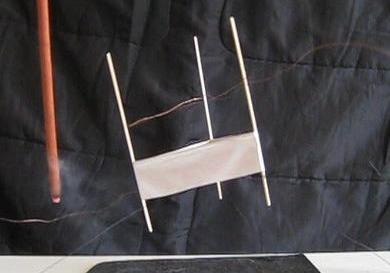
The second half of the following video shows the above smoke test but in live video form.
October 14, 2001 - Flame test using lifter 1b
I first wanted to create smoke in order to observe the wind created by the device. Unfortunately burning a piece of paper didn't produce much smoke so I tried putting a candle flame near the device in hopes of getting some smoke that way. The following picture shows that there is a fairly strong wind being produced, at least at some distance from the device. The flame in the picture is about 40mm to 50mm away from the edge of the device and is being blown straight down. Based on rough observation as I moved the flame towards the edge of the device, the air becomes turbulent around 70mm or 80mm away from the edge of the device. The downward flowing air begins somewhere closer than that.
Please note. Precautions were taken in holding this candle close to the device. Rubber gloves and rubber soled shoes were worn and every attempt was made to keep some distance away.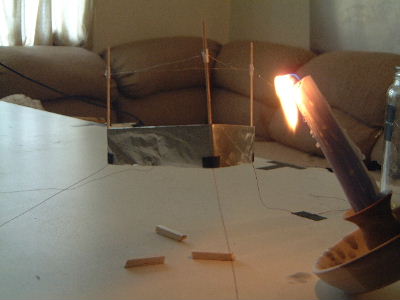
October 14, 2001 - Cardboard in between electrodes using lifter 1b
I decided to do the same test for ion wind that Jean-Louis Naudin did even though my flame test showed that a wind was present quite far from the edge of the device. The test is to place a piece of cardboard in between the electrodes thereby blocking any ion wind. As the picture below illustrates the cardboard was inserted so that it blocked all wind on one side and also any wind directly between much of the other two sides. Note that this did not block all of the wind that was evident in the flame test above.
An interesting observation is that there was no change in the height of the device either as the cardboard was inserted or any time while it was inserted. There was also no tilting of the device - the device remained on the same level.
